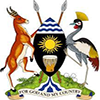How to Guides
Inquire
The Analyze step involves studying documentation, research, and past experience. Much of that can be found right here so you can save time and resources by searching this collection. For proper analysis, practitioners need to be able to:- Identify the Communication Issue through the review of existing information and factors that inhibit or help make desired changes.
- Conduct an audience and communication analysis for Audience Selection that looks at individual knowledge, attitudes, skills and behaviors, and audience characteristics, as well as media access, social networks, cultural norms, collective efficacy, and community dynamics.
- Understand the Programs and Partners in the location of the project by conducting a partner analysis at the community, national and international level. Identifying partners and allies you will enable your program to strengthen its communication interventions.
Design
In this step, the information gathered during Analysis is used to design a Strategy which will guide a the program in reaching its objectives. Good program designs:- Create Goals and Objectives to quantify the desired changes in knowledge, attitudes, skills, behaviors, policies expected within a specific time.
- Develop a Program Position with a memorable identity or theme, linking all messages and activities.
- Select the right Approach and Media Mix to provide a coordinated, multi-level program that combines multiple communication channels.
- Design a Monitoring and Evaluation Plan that provides indicators and data sources to monitor program implementation and audience reaction, provide a feedback loop, and measure outcomes and impact.
- Plans for Leadership and Coordination with partners and stakeholders to ensure synergized action.
Create and Test
This step involves utilizing the Science and Art to develop concepts, branding, materials, mass media, messages, stories and participatory processes. The end products should be guided by the Strategy:- Message Development crafting effective messages that are consistent and relevant for intended audience(s) and can be used in all channels and tools.
- Material Design involves the development of interventions.
- Concept testing explores reactions to general ideas with stakeholders and audiences representatives and should be followed by pre-testing.
- Pre-testing is a detailed testing of almost complete materials, messages, media and processes with stakeholders and audiences.
- Media and Distribution planning gets the message out and should be developed to maximize coverage.
Mobilize and Monitor
Mobilize and Monitor is the fourth step in the communication process. In this step you mobilize your partners, implement your program and monitor its progress.Evaluate and Evolve
Evaluate and Evolve is the fifth step in the communication process. In this step you evaluate your program and use lessons learned to inform development of upcoming programs.Stakeholder Participation
The communication process works best when program partners, decision-makers, audience members and technical experts are actively involved in each step. Engaging these stakeholders throughout the process spreads ownership and encourages sustainability.Organizational Development
A strong organization is critical to being able to successfully implement SBCC programs. Organizational development focuses on improving leadership, management, systems, and financial sustainability.Foundations of SBCC
The Big Picture step of the health communication process involves gaining a broad understanding of health communication as an Art and a Science. It is critical for communication specialists to recognize that in order to be effective, programs need to be responsive to the changing environment. Communication theories and models drive the strategy development process and work to explain the “how” and “why” of social and behavior change. That’s why this step includes:- Understanding the Art of SBCC
- Understanding Communication Theories and the choice you make will determine how to analyze the individuals and groups the program wants to reach, as well as the model or framework to use.
- Understanding Communication Models and Frameworks and how they apply to programming will help guide you in the development of your program.

